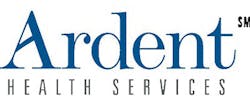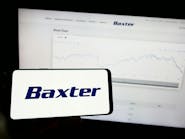Elite 8 in ’16 extending supply chain operations to new heights
The capstone of HPN’s coverage at year’s end includes its annual snapshot of “Supply Chain Operations Worth Watching.”
This year, eight organizations, spanning seven states, join 62 other healthcare supply chain trailblazers highlighted by HPN since 2011.
Each of them provide prime examples of hospital and healthcare organization supply chain teams achieving lofty heights and reaching critical milestones.
If your organization— or even one of which you know— didn’t “make the list,” be sure to let us know and then plan how to showcase your organization— or that one you believe is deserving— for consideration for the 2017 compilation.
Peruse the latest Elite list for highlights on what others are doing and why they matter, noting any common themes.
Advocate Health Care, Downers Grove, IL
During the last two years Advocate Health Care has developed and demonstrates a mastery of its pharmacy supply chain, linked to its “mini-consolidated service center” sequestered in a distributor’s warehouse. Advocate opened the pharmacy CSC inside Owens & Minor’s warehouse last March and already has booked more than $7 million in savings, more than doubled its pharmacy inventory turns (to 23 per year from 11) and reduced expired product. At the PCSC, Advocate staffers “centralize preparation of medications, distribute in low units of measure and make strategic buys ahead of price increases and drug shortages.” How? Advocate tapped Omnicell to develop a price pattern algorithm that “monitors and finds patterns in manufacturer price increases.” Working together, they match price hike predictions with actual purchase history and decide whether it makes sense to purchase a larger quantity of product in advance of a price increase as a cost avoidance tactic for a limited time. When Advocate learned its medical/surgical distributor had “extra space” in its local warehouse it approached them to lease the space for pharmacy operations. Once the agreement was finalized, Advocate designed the space as a private section of the warehouse only accessible by Advocate employees. Another major advantage? Advocate saves on transportation costs because Owens & Minor stows their medication totes in the same trucks used to deliver med/surg supplies.
Ardent Health Services, Nashville, TN
What began in 1993 as Behavioral Healthcare Corp., an owner and operator of psychiatric hospitals, since has transformed into Ardent Health Services, an investor-owned hospital chain with 19 acute care facilities in six states, and with supply chain operations undergoing its own considerable changes in the last two years. Ardent’s Supply Chain and Clinical Resource team focused on centralizing processes among its three healthcare systems and will be folding in a fourth come January 2017. Their efforts spanned improving item master usage, reducing price discrepancies, increasing electronic data interchange (EDI) transactions and improving outbound data matching through a system-wide value analysis process, a pharmacy formulary management initiative, purchased services improvement and a “strict item master clean-up project.” As a result, Ardent slashed its “non-item master” expense stream to below 3 percent from 20 percent, increased EDI usage and improved group purchasing contracting through HealthTrust by more than 96 percent.
AtlantiCare, Atlantic City, NJ
AtlantiCare, a member of Geisinger Health System, may have earned the Malcolm Baldrige Quality award in 2009, but this finalist in Healthcare Purchasing News’ 2016 Supply Chain Department of the Year award didn’t rest on those laurels. Through its consolidated service center, AtlantiCare’s Supply Chain team has expanded its influence beyond traditional supply chain operations of sourcing, contracting and moving products (achieving on average 29 inventory turns per year) toward exploring data analytics, forensic analytics, trending and forecasting and lean management to contribute to overall expense reduction via McKesson and GHX technologies and a cleansed item master file. Among its successes are improving courier usage through better management of STAT orders, and adjusting minimum and maximum stock item quantity levels to more efficiently oversee its “kill or fill” initiative based on end-user ordering patterns and available stock in the CSC. In fact, efforts by the “Killed Stock Order Team” helped improve customer relationships and service levels with surgical services, and recorded more than $4.4 million in expense reductions.
BJC HealthCare, St. Louis, MO
Search any list that ranks hospitals and healthcare systems for leading achievements and if you don’t find BJC HealthCare on it, there’s either been a dramatic oversight or something else drastically wrong. That’s because many self-described “subject matter experts” in the industry know that BJC tends to blaze trails with its clinical and operational decisions, ranging from inking forward-thinking supplier agreements to partnering with clinicians to implementing comprehensive value analysis projects. BJC is known for debuting innovative and strategic supply chain operations, such as its SupplyPlus collaborative work process between clinicians and operations and its quest to reduce physician preference “special requests.” In the past, these physician preference special requests required buyers to source, process and finalize the transaction manually. By automating this process, Supply Chain was able to reduce special requests by 7 percent in the first six months alone, a savings of $225,000, and funnel those decisions through the value analysis process. Meanwhile, SupplyPlus reinforces Supply Chain’s subject matter expertise versus sales representative influence to engage clinicians and strengthen those professional relationships. In fact, by working with clinicians more closely on product utilization management they were able to save nearly $1.2 million through completed projects this year with more in store.
St. Luke’s Health System, Kansas City, MO
St. Luke’s Health System continually strives to advance its own supply chain as an example for others in the industry. The organization’s Supply Chain team engages clinicians to participate in resource management opportunities, using products and services from BroadJump, McKesson and Vizient, to help them remain on track. In fact, the St. Luke’s Supply Chain team recruited 420 clinicians, physicians and end users to actively participate in 21 different value analysis committees. They pursue automated “perfect orders” with no manual intervention, increasing frequency to 80 percent from 45 percent within the last two years, and measure 108 different elements of supply chain operations using internally developed dashboards. They’ve deployed low-unit-of-measure and kanban techniques for inventory management as well as a unitized delivery program for surgical cases. Product formulary catalog compliance approaches 100 percent. Their goal is simple enough: They want to drive value through strategic design.
Texas Health Resources, Arlington, TX
Texas Health Resources (THR) may have its fingers on the pulse of its hospital members but a relatively new division extends another digit to its growing array of non-acute care facilities. Texas Health Supply Chain Services enables physician offices, ambulatory surgery centers, imaging centers, free-standing emergency rooms and other non-acute care facilities within and outside of THR the benefits of the organization’s supply chain expertise for equipment, medical/surgical products, pharmaceuticals and purchased services. Customers use a web-based system for supply management called “ENVI” that enables them to purchase THR-contracted and Premier-contracted items directly from approved suppliers on any internet-connected device. The system also helps these facilities track their performance histories and purchasing trends.
Temple University Hospital, Philadelphia
Temple University Hospital has mastered the art and science of managing key performance indicators (KPIs) and communicating their efforts effectively and efficiently to the C-suite through the use of a well-designed supply chain dashboard that taps into its PeopleSoft enterprise resource planning (ERP) system, its MediTract contracts database and its ProdigoMarketplace, which incorporates a single platform for its own item master, vendor-hosted catalogs and virtual item masters. Understanding the age-old notion of “what gets measured gets managed,” Supply Chain started tracking their own performance, including catalog and “free-text purchasing” transactions, data accuracy, distribution efficiency, asset inventory management and overall customer service, using data and end-user input to improve workflow and workload. They also recognized the value of recording their KPIs as a way to promote Supply Chain objectives.
Tufts Medical Center, Boston
Tufts Medical Center’s Supply Chain team recognizes what drives the Cath Lab beyond the patient care angle: Supplies. Why? Because they know that supplies account for 70 percent of the Cath Lab’s expense stream so Supply Chain set out to show the Cath Lab how data-driven decision-making in supply chain can make a bottom-line difference to that department. To show the Cath Lab how to manage the wealth of high-value products on its shelves, Tufts applied Cardinal’s real-time radiofrequency identification (RFID) technology to monitor and track usage patterns from inventory storage to point of use to determine proper ordering and replenishment needs. The Cath Lab simply needed help managing their PAR levels that included vendor-managed consignment products and physician preference items. Using automation, including “smart bins,” “smart hanging” and “smart wands” they were able to record consumption patterns by lot, serial and expiration dating, and project that on an easy-to-visualize dashboard. The results? $1.3 million in reduced inventory and $1.5 million in cost reductions during a two-year period. A Supply Chain analyst “embedded” in the department continues the forward momentum and paves the way for similar partnerships with other clinical departments.
Editor’s Note: For a list of HPN’s Supply Chain Operations Worth Watching from 2011 to 2015, visit https://www.hpnonline.com/hpn-hall-fame/.

Rick Dana Barlow | Senior Editor
Rick Dana Barlow is Senior Editor for Healthcare Purchasing News, an Endeavor Business Media publication. He can be reached at [email protected].













